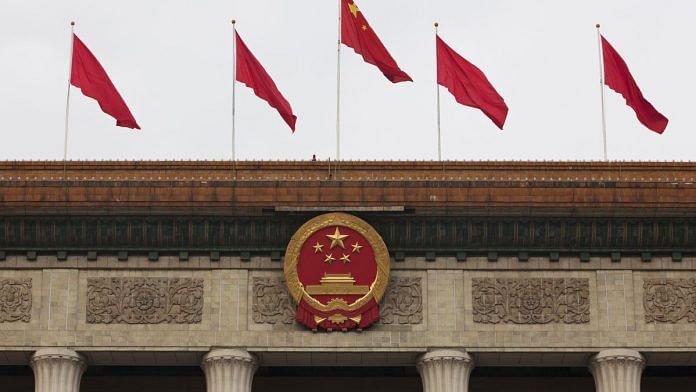New Delhi: In episode 567 of ‘Cut The Clutter‘, ThePrint’s Editor-in-Chief Shekhar Gupta decoded the recent investigation by The Indian Express, where it exposed how a private Chinese data mining company had been tracking ‘big data’ of over 10,000 Indian individuals.
“Big data is everything that happens in somebody’s life, which involves data from even small and irrelevant events,” explained Gupta.
The data was being tracked by a company called Zhenhua Data Information Technology Co. Limited in Shenzhen in China’s Guangdong Province.
Gupta also referred to another investigative report in The Washington Post by Jerry Shih. The report revealed that this Shenzhen-based company had shut down suddenly once the world got alerted to it.
“It didn’t happen because of any big hacking or intelligence or counter intelligence operation, that happened because the website itself left the whole database of individuals it was tracking unsecured,” said Gupta.
This company has been tracking at least 2.4 million (24 lakh) people around the world — 10,000 Indians, 50,000 Americans, 40,000 British and 35,000 Australians.
He asserted that the ‘target’ of this company were democracies of open societies where information is freely available.
“This is the dictatorial system using power of big data and power of technology of scraping everything from societies where data is easily available,” he said.
Also read: China is an enemy of freedom of thought. It wants the same from other powerful nations
Scraping data from public platforms
In order to make sense of how this Chinese company was able to scrape data from individuals across the world, Gupta noted that it was necessary to understand a Chinese law that was passed in 2017.
Called the Inaugural National Intelligence Law, this law compels Chinese people and organisations to assist the government’s intelligence agencies with any intelligence activity that they may consider within the law.
“This means that every Chinese by law is compelled to help in the country’s spying ability,” Gupta said.
The company Zhenhua was set up by an IBM engineer Wang Xuefeng. The website, which has now been taken down, had said that it was a patriotic firm and it also listed the Chinese military as its prime customer.
Gupta revealed that the Central Investigation Agency (CIA) in the US believed that this company had been scraping data from public platforms such as LexisNexis, LinkedIn or possibly Facebook.
Although a spokesperson from Facebook has now said that they banned this company from the site and that they don’t allow data scraping.
“At the same time, it does look like the Chinese company was doing public data scraping; illegal or legal, we don’t know,” Gupta said.
He also quoted Samantha Hoffman, a cybersecurity expert at the Australian Strategic Policy Institute, who had been mentioned in the Washington Post report.
Hoffman was quoted as saying, “We know that Chinese Communist Party seeks to promote bulk data collection now, with the intent that the ability to process and use it will follow in the future.”
She added, “This data set proves that they’re targeting individuals and social media is an important tool.”
Gupta said that this was important to understand the motivations of the Chinese collecting this data.
In 2015, the Chinese Communist Party had issued a high-level strategy paper on big data that brought up the Made in China 2025 policy.
Through this policy, the Chinese were able to collect data from around the world and use it computationally, said Gupta.
This data could then be used to ‘blackmail’ or ‘arm twist’ a person.
Also read: Reader View: India & China need to pursue diplomatic talks to settle border issues
Fifth generation warfare
Gupta also talked about the five different kinds of warfare.
He explained that the first generation of warfare was ‘old time war’. “One army comes in line and there is a column. It’s like the First Battle of Panipat.”
Second generation warfare was when the guns came in. “Guns let you take certain positions and hide somewhere, you could do positional warfare,” he said.
Third generation emerged as more technology came in and ‘airborne assaults’ started. One could get behind enemy lines and ‘pulverise’ the enemy. According to Gupta, the Second Gulf War against Iraq was an example of a third generation warfare.
“Fourth generation warfare is what Pakistan has been doing with India for a long time. This is when you don’t rely on uniform forces or troops that are controlled by the state.”
Fourth generation warfare involves the use of ‘extra state organs’ like the al Qaeda, Lashkar-e-Taiba, Jaish-e-Mohammed, Islamic State and so on.
The fifth generation warfare is still “unfolding”, said Gupta. It is a warfare of “perceptions and information”.
“It is also a warfare of cultural and moral perceptions. This is carried out without using any troops on the ground,” he said.
“Fifth generation warfare has to be fought outside, essentially behind keyboards,” he added.
Watch the latest episode of CTC here:
Also read: Govt looking into reports that China tracking 10,000 Indians via ‘hybrid warfare’ firm



